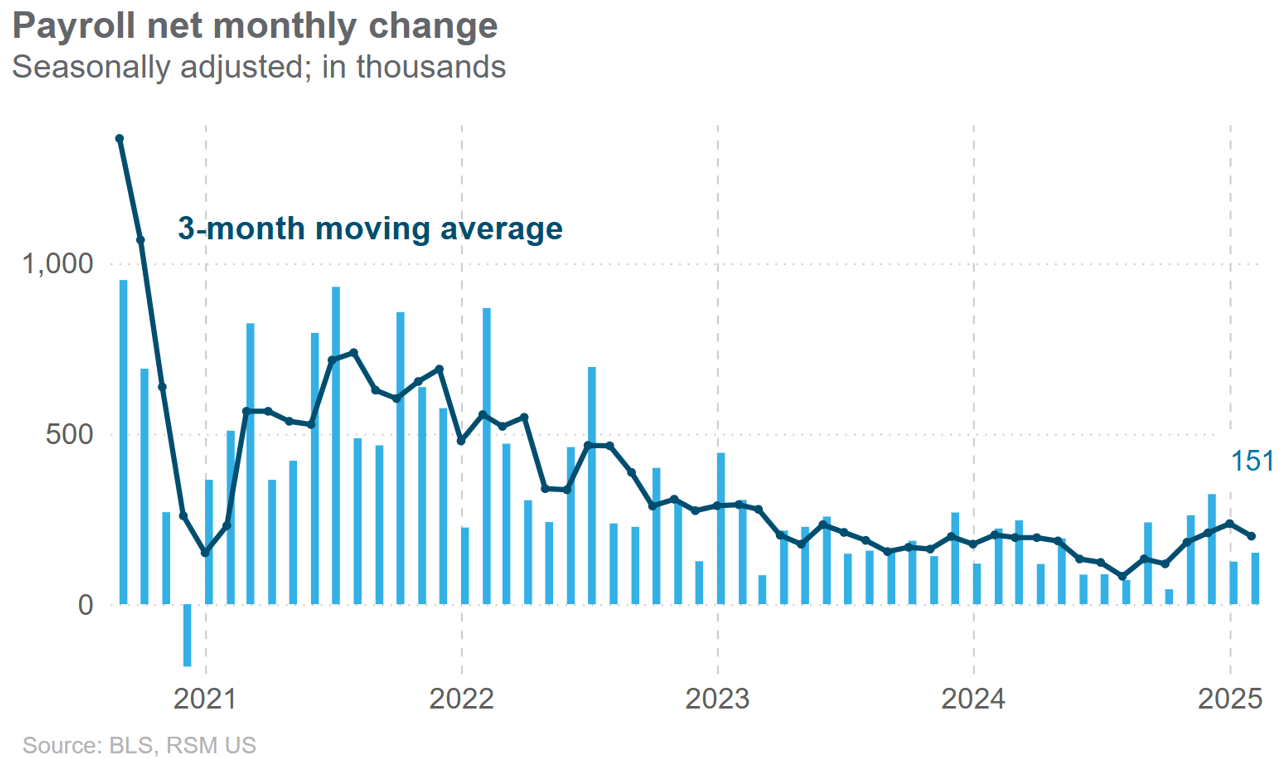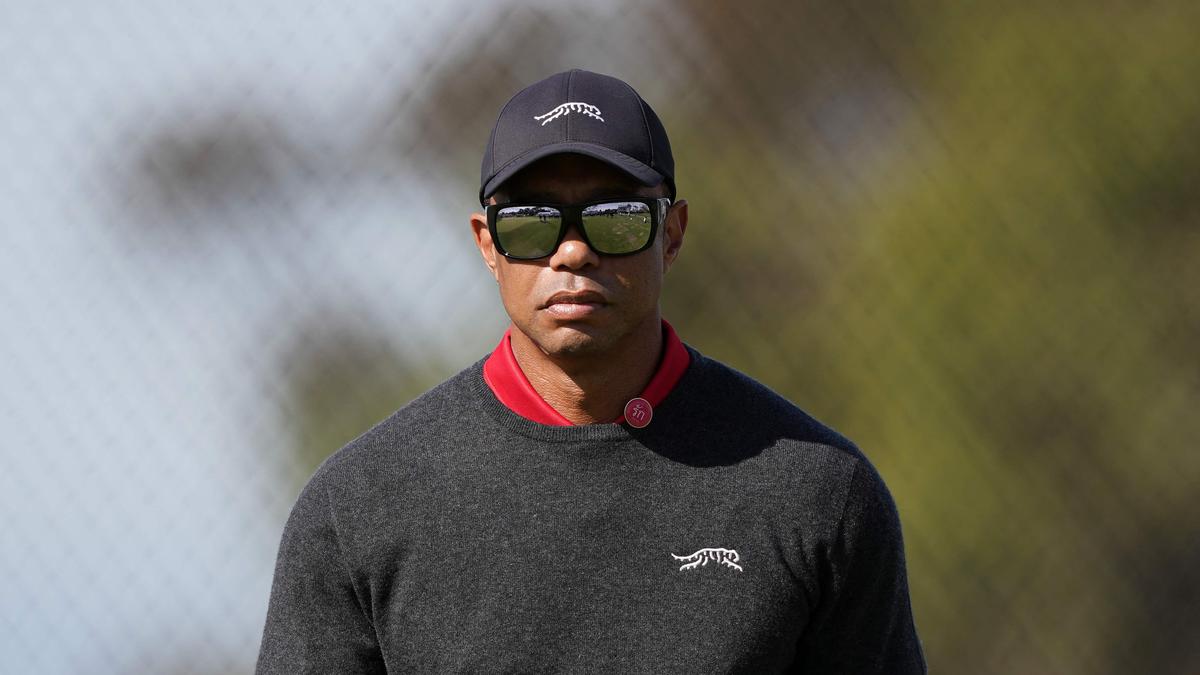Solid labor demand persists as U.S. economy adds 151,000 jobs in February

The American economy added 151,000 jobs in February, a sign that demand for labor remains solid amid the significant policy changes in Washington.
The February jobs report should ease some fears around the growth scare across the economy.
But we think that figure understates the true underlying trend, which is closer to 175,000 jobs given the 404,000 full-time and 1.3 million part-time workers who were not on the job because of the rough winter.
The February jobs report, released by the Bureau of Labor Statistics on Friday, should ease some fears around the growth scare across the economy, or what I would refer to as a classic late-cycle slowdown.
The American economy is resilient and is strong enough to absorb the body blows that are coming from higher trade taxes and slower government spending and hiring.
Despite the increase to 4.1% in the unemployment rate, the American economy is still at full employment as average hourly earnings increased by 0.3% in February and by 4.1% from a year ago.
The labor market remains tight, and with the immigration channel being shut down, we expect private sector labor demand to remain stout for the time being.
The impact of cuts in the federal government’s workforce—the DOGE effect—was evident in the data as 10,000 federal government workers lost their jobs during the month as state and local government hiring slowed.
Read more of RSM’s insights into the economy and the middle market.
That slowing in public sector demand surely has to do with efforts to put the federal budget on a more sustainable path, which translates to reduced cash flows of federal money to state and local municipalities.
We think that the trend in government hiring will slow notably to around 10,000 per month or fewer, which is well below the six-month average of 30,000.
Policy implications
While market actors are pricing in three rate cuts by the Federal Reserve this year on the back of the growth scare across the economy, that view seems a bit premature and is not in alignment with the continuing demand for labor and rising wages.
In addition, with businesses prepared to pass along the costs of higher trade taxes to consumers, we are going to see an increase in inflation should the aggressive trade policies be implemented.
Inflation, and not the pace of hiring, will shape Federal Reserve policy this year in our view.
If there is any change to the Fed’s policy path, it will be in the second half of the year once it better understands the impact of the administration’s new policies.
The data
One of the better bits of data inside the February jobs report was that it was tilted in the direction of higher wages.
There were 10,000 manufacturing, 19,000 construction and 34,000 goods-producing jobs added to total employment in February.
Once one adds in the 21,000 financial jobs and the 73,000 private education and health care jobs, most positions created on the month were in higher-paying categories.
Trade and transport added 21,000 positions and information added 5,000 jobs while professional business services lost 2,000, temporary help fell by 12,000 and leisure and hospitality, as one would expect because of the harsh winter, declined by 16,000 jobs.
Total private hours worked remained unchanged at 34.1 and manufacturing hours also remained unchanged at 40.1. Aggregate hours worked increased by 0.1% to 116.1, which is in line with the three-month average annualized change.

The labor force declined by 385,000 workers to 170.35 million while there were 163.307 million workers on the job. The employment-to-population ratio eased to 59.9% from 60.1%, while the median duration of unemployment stood at 10 weeks.
The takeaway
Labor demand remains solid as firms continue to seek out new hires in an economy best described as being at full employment.
Wage growth is more than sufficient to attract workers from the sidelines. Given the reduced number of immigrants entering the workforce and inflation likely to rise as tariffs are implemented, it would not be surprising to see labor begin to bid up wages again.
Such dynamics would not be conducive to the three rate cuts that the market has priced in.
Related
U.S. economy adds jobs as federal layoffs and rising unemployment…
Julia Coronado: I think it's too early to say that the U.S. is heading to a recession. Certainly, we have seen the U.S. just continue t
The job listing site highlighting H-1B positions so Americans can…
A mysterious new job listings website recently went live, solely showing roles companies want to offer to their H-1B holders seeking Green Cards in an attempt t
Tepid February Jobs Report Boosts Odds of a June Fed…
Federal Reserve Board Chairman Jerome Powell speaks during a news conference. Photo by Chip ... [+] Somodevilla/Getty Images.Getty Images The February jobs repo
French university offers jobs to American scientists afraid of government…
As the current federal government in the U.S. has been freezing or cutting funding for several research grants, a French university has stepped in with an offer













